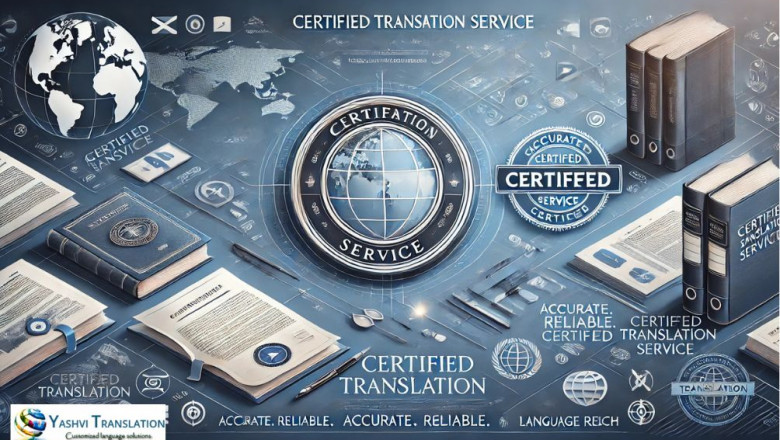views
The Certification Process: Ensuring Accuracy in Certified Translation Services
In today’s globalized world, businesses and individuals often require official document translations for legal, academic, and immigration purposes. A certified translation service ensures that these translations are accurate and legally recognized. Understanding the certification process is crucial to ensure compliance with regulations and avoid unnecessary delays. This article outlines the key steps involved in the certification process and explains the essential components that make a translation officially certified.
What Is a Certified Translation Service?
A certified translation service provides translated documents that include a signed statement from the translator or the translation agency affirming the accuracy and completeness of the translation. These documents are often required by government agencies, universities, and courts, making the certification process a critical step in legal and official matters.
The Certification Process: Step by Step
The certification process involves multiple steps to ensure the translation meets official standards. Below is a breakdown of the key steps:
1. Assigning a Qualified Translator
The process begins with selecting a professional translator who is fluent in both the source and target languages. The translator must have expertise in the subject matter, especially when dealing with legal, medical, or technical documents.
2. Accurate Translation of the Document
Once the document is assigned, the translator meticulously translates the content while maintaining accuracy, clarity, and the intended meaning. In the case of legal or official documents, even minor errors can lead to rejection or legal complications.
3. Review and Proofreading
After the initial translation is completed, a second professional (often a proofreader or editor) reviews the document to ensure grammatical accuracy, consistency, and completeness. This step helps eliminate potential errors before finalizing the translation.
4. Drafting the Translator’s Declaration
A key element of the certified translation service is the translator’s declaration. This document, also known as a statement of accuracy, includes:
- The translator’s name and credentials
- A declaration stating that the translation is a true and accurate representation of the original document
- The language combination (e.g., English to Spanish)
- The translator’s signature and date
5. Inclusion of a Certificate of Accuracy
The certificate of accuracy is a formal document that accompanies the translation. It serves as an official guarantee that the translation meets the necessary legal and linguistic standards. The certificate typically includes:
- The name of the translation service provider
- A certification statement affirming the accuracy of the translation
- A seal or stamp (if required by the requesting institution)
- Contact details of the translation service for verification purposes
6. Final Formatting and Submission
The certified translation is then formatted to match the original document as closely as possible. It is printed on official letterhead (if required) and submitted in the specified format—either electronically or as a hard copy—based on the client’s requirements.
Why Is Certification Important?
Many organizations and government agencies require certified translation services for various legal and official processes. Some key reasons for certification include:
- Ensuring the document is legally recognized
- Meeting immigration or visa application requirements
- Complying with academic or professional credential evaluations
- Avoiding legal disputes due to translation errors
Conclusion
A certified translation service plays a vital role in legal, academic, and official documentation. By following a structured certification process—including accurate translation, proofreading, the translator’s declaration, and a certificate of accuracy—clients can ensure their documents meet all necessary requirements. Whether for immigration, court cases, or business contracts, a properly certified translation provides credibility and peace of mind.
If you need a reliable certified translation service, always choose a professional provider to guarantee accuracy and compliance with regulatory standards.














Comments
0 comment